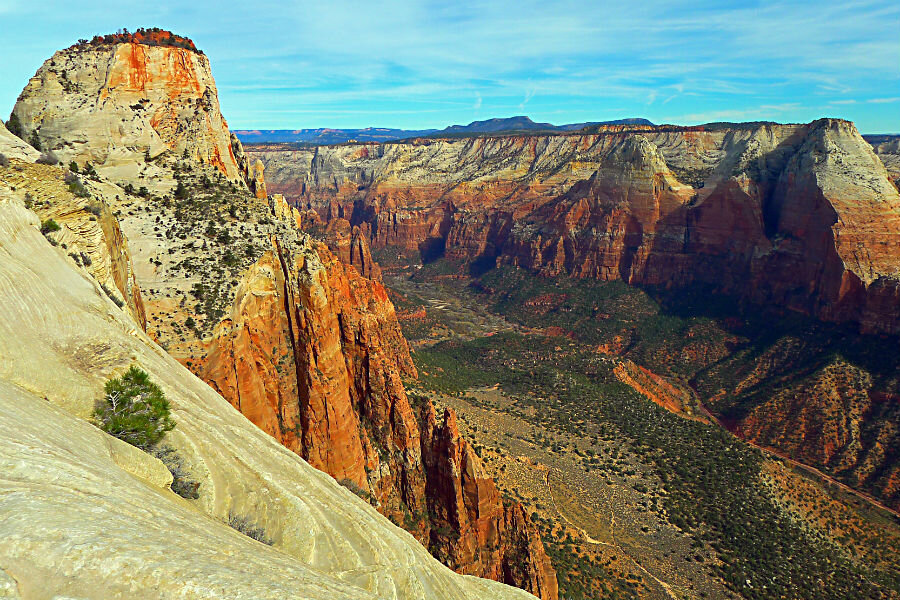Zion Canyon was sculpted by a colossal rockslide, say researchers
Loading...
Zion is arguably one of the finest national parks to grace the United States, a sweeping flat-bottomed valley with a river bubbling through its center, great cliffs of red Utah rock arching into the skies on either side.
It is a landscape that appears almost alien, and of those who ponder how such breathtaking beauty could come to be, few would likely hit upon the answer.
In a new study, scientists have dived into a colossal landslide thought to have been instrumental in shaping the landscape, hammering out the details of an earth-shattering event that was previously understood in much vaguer terms.
"When I first came across this 1945 paper about the formation of Zion, it was like a lightning bolt hitting me, the idea that a landslide had played a role in creating the majesty of Zion," senior author Jeff Moore, an assistant professor of geology and geophysics at the University of Utah, tells The Christian Science Monitor in a phone interview.
With a desire to delve into the details and bring this little known story to the public's attention, Dr. Moore and his team set about analyzing Sentinel Mountain, the spot that was ripped apart all those millennia ago.
Their analysis consisted of three fundamental phases: First, defining the volume of the landslide; second, measuring quantities of beryllium-10 in surface rock, which builds up at a known rate with exposure to sky and "cosmic particles"; and finally, feeding their data into 3-D-modeling systems.
The figures that emerged were astounding: 10.1 billion cubic feet in volume, or 90 times the amount of concrete needed to build the Hoover Dam, with speeds of up to 200 miles per hour, enough to finish the job in about one minute.
The researchers also nailed down the specifics of when the rock avalanche smashed through Zion, dating it to about 4,800 years ago and showing it was so large that it would have covered New York City's Central Park with 275 feet of debris.
"Other than the initial cutting of the canyon, this rock avalanche and the fact it dammed up the canyon for hundreds of years is the most important thing that influenced what we see," Dave Sharrow, National Park hydrologist at Zion, who was not directly involved in the study, tells the Monitor in a phone interview.
One of the ways in which this event had such a lasting impact was its effect on the Virgin River, the waterway that meanders through the canyon's floor: The avalanche dammed it, creating a lake that lasted some 700 years.
Because of this lake, this "subtle piece of the canyon's history, hidden in plain sight," the valley floor is as we see it today: flat, and covered in the sediment deposited by that vast body of water.
"I want people to enjoy this place like I do: imagine the cliff crashing down, imagine a huge lake overhead," says Dr. Moore. "All of Zion was filled with a lake! It's a wonderful thing to imagine."






